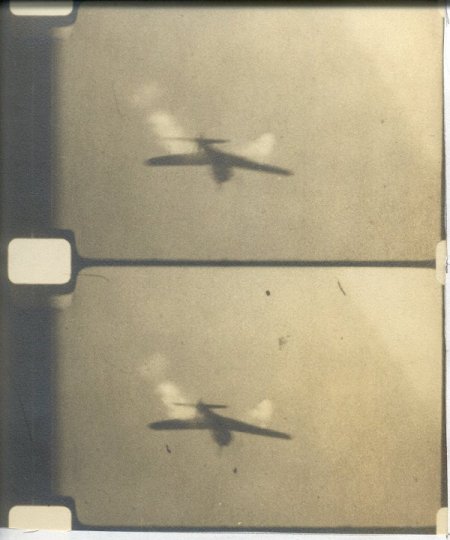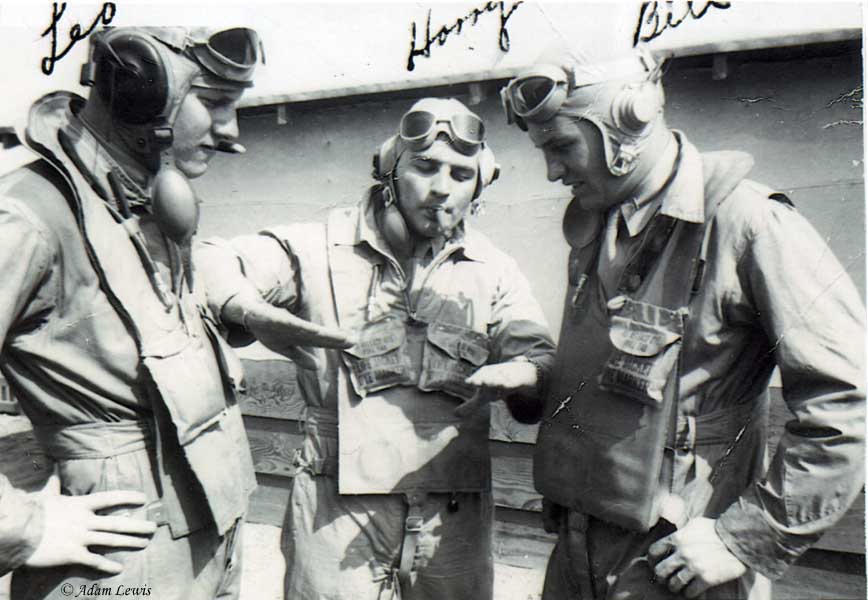This is the Third part of a long, multi-post series on writing believable starfighters in Military SF and Space Opera. Part 1 | Part 2
6. Battle Damage
Every combat fighter sustains battle damage at some point. How does your starfighter defend itself? Does it have energy shields? Thick armor? What would it take to make it blow up in a glowing ball of energy like in Star Wars? Would it even blow up at all, or just break apart into pieces?
In WW2, projectile guns did plenty of damage to fighter planes. They had armor plating around the pilots and fuel tanks, but because of weight considerations, it needed to be sparse. Fuel tanks were lined with rubber to prevent leaks after being shot through. Usually airplanes sustained damage to their engines or pilot and then just augured into the ground from a great altitude. Rarely did they blow up like a TIE fighter.

If you watch gun camera footage from WW2, you will see pieces of metal and other debris flying from stricken planes before they fell apart. This debris would often pose a hazard to the attacking plane if it flew through the bits of broken metal and damaged its own engine or propeller.
Modern wars are fought with stand-off missiles and the two attacking fighters might never see each other, despite what you see in the movies. In the Vietnam war, guns were not included on fighter jets and as a result, the Americas suffered more casualties in air-to-air combat than in any previous war. As a result, guns were strapped to the bottom of jets like the Phantom F-4. The local Air Force base here in Idaho, Mountain Home AFB, are known as the Gunfighters for having flown F-4’s equipped with gun pods underneath their fuselages in Vietnam.
After the war, guns were designed back into fighter jets and pilots went to special schools to learn how to fight with them. Top Gun and Red Flag are the Navy and Air Force schools designed to teach air-to-air combat with guns and missiles.
In space your starfighter would probably use some kind of missile or maybe laser guns. Projectile weapons would perhaps be smarter, like little guided missiles. What kind of damage would a laser gun do? Would they even be practical?
7. Language
Research how fighter pilots talk, gesture with their hands, the buzz words they use. Read about actual WW1 and WW2 air battles. The best are the non-fiction ones from autobiographies. They give you an intimate look at what it was like in day to day fighting. Some of my favorite books are the air war histories written by Martin Caiden.
If you can talk with actual pilots, that is another invaluable asset. Hang out at your local airport. Not the one where millions of people travel from, but the local civil aviation ones. Where private pilots park their Cessnas and Piper Cubs. Heck, the best thing you could do is take a few flying lessons. When I learned to fly I went up in a small plane with an instructor on the first day. He had me hands on with the controls the whole ride.

Talking to veteran pilots is also a great way to learn about the past through the eyes of someone who was there. Take notes, ask them questions. They are usually pretty open when they know you are truly interested in what they did defending the country. But if you ask a veteran and they say no, respect that privacy and thank them for their service.
I grew up on civil aviation. My dad was a pilot and my uncle was a pilot. My dad owned a Cessna 150 and I flew it while still in High School. So you could say that aviation is in my bones. I’ve spent many hours at air shows, air museums and sitting in hangars listening to pilots talk. It’s actually called hangar flying.
If you can’t get to a museum many of the best ones have virtual tours like the Warhawk Museum near Boise. This way you can practically sit in the cockpits of all kinds of airplanes, jets and helicopters. This is a great way to get a pilot’s eye view of the inside of a rare warbird.
I hope this series of posts has been helpful. Writing about starfighters in a way that makes them seem real and compelling to a reader is no easy task. But if you do the research and take the time to think things through, you can wind up with some great world building and a really fun story.
